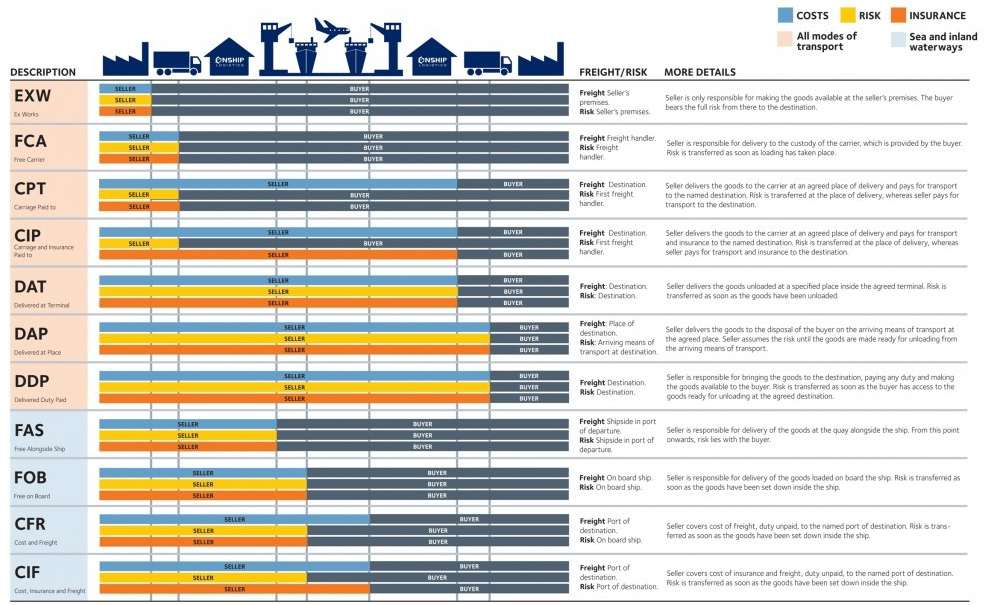Supply Chain, Logistics, and Transportation
Supply Chain:
The supply chain is a broad term that includes all processes involved in the production and distribution of goods, from the procurement of raw materials to the delivery of finished products to the end customer. It involves multiple stages and various entities such as suppliers, manufacturers, distributors, and retailers.
Logistics:
Logistics is a component of the supply chain that focuses on the planning, implementation, and control of the efficient, effective forward and reverse flow and storage of goods, services, and related information between the point of origin and the point of consumption to meet customer's requirements. It includes activities such as inventory management, warehousing, packaging, and transportation.
Transportation:
Transportation is a part of logistics that specifically involves the movement of products, materials, and personnel from one location to another. It involves activities like selecting the mode of transportation (such as by truck, ship, train, or airplane) and planning and managing routes and shipment schedules.
Similarities and Differences:
✔ All three concepts involve the movement and flow of goods.
✔They are designed to work together to ensure that every step, from raw material procurement to end-product delivery, is seamless and efficient.
The differences lie in their scope.
❌ A supply chain has a broader scope and involves all stages of procurement, production, and distribution.
❌ Logistics is an essential component of the supply chain and includes inventory management, warehousing, and handling, in addition to transportation.
❌ Transportation refers specifically to the movement of goods and materials between locations.
Reference: Christopher A. Saavedra
Glossary of Terms
Glossary of Terms
| LCL | Less than full Container Load |
| FCL | Full Container Load |
| CFS | Container Freight Station (Depot) |
| CY | Container Yard (Wharf) |
| FAK | Freight all Kinds |
| 20’ | Standard 20 foot long international container = 1 TEU |
| 40’ | Standard 40 foot long international container = 2 TEU or 1 FEU |
| TEU | 1 Twenty Foot Equivalent Unit |
| FEU | 1 Forty Foot Equivalent Unit |
| lbs. | Pounds – 2.204lbs = 1kg. |
| cft. | Cubic feet – 35.315 cubic feet =1 cubic metre |
| kg. | Kilogram – 1000kg = 1 tonne |
| cbm/m3 | Cubic Metre |
| Ex Works | Buyer bears all costs of transportation from seller’s premises |
| FOB | Seller responsible for costs up to Free On Board ship |
| C&F/CIF | Costs & Freight / Cost Insurance & Freight, seller responsible for costs to bring goods to named destination. Buyer’s responsibility for costs commences at ships rail |
| FIS | Free In Store – Sellers responsibility for all costs, including duty, for delivery into Buyers premises |
| DO | Delivery Order |
| APCA | Australian Port Charges Additional |
| CAF | Currency Adjustment Factor |
| BAF | Bunker Adjustment Factor |
| CABAF | Currency Adjustment Factor + Bunker Adjustment Factor |
| THC | Terminal Handling Charge |
| TRC | Terminal Receiving Charge |
Incoterms
The purpose of International Commercial Terms (Incoterms) is to provide a set of international rules for the interpretation of the most commonly used trade terms in foreign trade.
Each Incoterms rule specifies:
The obligations of each party (example: who is responsible for services such as transport; import and export clearance..)
The point in the journey where risk transfers from the seller to the buyer
So by agreeing on an Incoterms rule and incorporating it into the sales contract, the buyer and seller can achieve a precise understanding of what each party is obliged to do, and where responsibility lies in event of loss, damage or other mishap.

